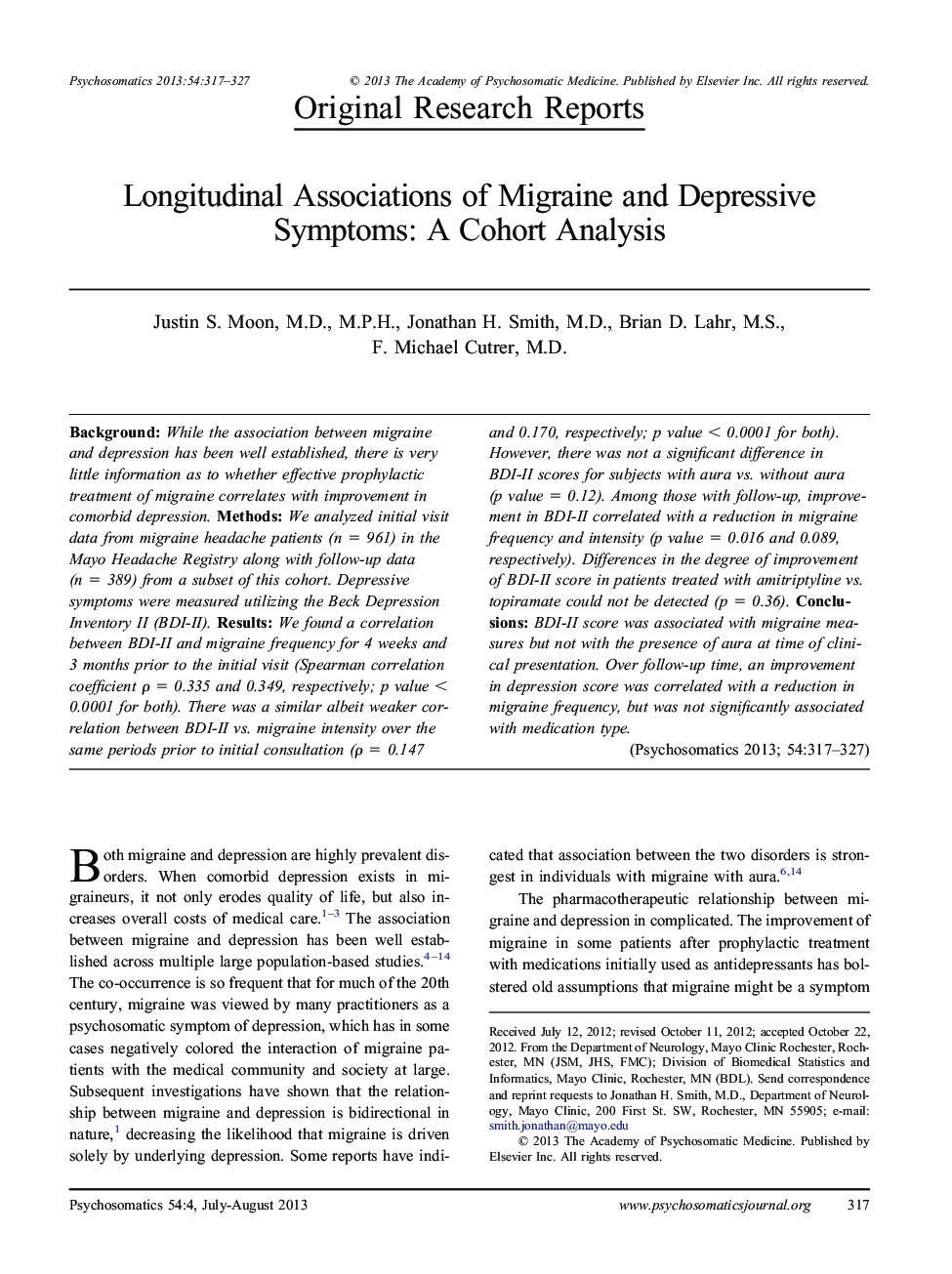| کد مقاله | کد نشریه | سال انتشار | مقاله انگلیسی | نسخه تمام متن |
|---|---|---|---|---|
| 337913 | 547644 | 2013 | 11 صفحه PDF | دانلود رایگان |

BackgroundWhile the association between migraine and depression has been well established, there is very little information as to whether effective prophylactic treatment of migraine correlates with improvement in comorbid depression.MethodsWe analyzed initial visit data from migraine headache patients (n = 961) in the Mayo Headache Registry along with follow-up data (n = 389) from a subset of this cohort. Depressive symptoms were measured utilizing the Beck Depression Inventory II (BDI-II).ResultsWe found a correlation between BDI-II and migraine frequency for 4 weeks and 3 months prior to the initial visit (Spearman correlation coefficient ρ = 0.335 and 0.349, respectively; p value < 0.0001 for both). There was a similar albeit weaker correlation between BDI-II vs. migraine intensity over the same periods prior to initial consultation (ρ = 0.147 and 0.170, respectively; p value < 0.0001 for both). However, there was not a significant difference in BDI-II scores for subjects with aura vs. without aura (p value = 0.12). Among those with follow-up, improvement in BDI-II correlated with a reduction in migraine frequency and intensity (p value = 0.016 and 0.089, respectively). Differences in the degree of improvement of BDI-II score in patients treated with amitriptyline vs. topiramate could not be detected (p = 0.36).ConclusionsBDI-II score was associated with migraine measures but not with the presence of aura at time of clinical presentation. Over follow-up time, an improvement in depression score was correlated with a reduction in migraine frequency, but was not significantly associated with medication type.
Journal: Psychosomatics - Volume 54, Issue 4, July–August 2013, Pages 317–327